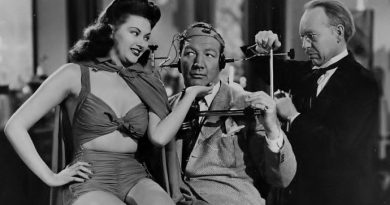Neil Armstrong Visits Vancouver

Wikimedia Commons
For more than 30 years in Vancouver, starting in the 1960s, a creative fellow named Tom Butler was practicing the art of Public Relations. He was—and, as a newspaper columnist at the time I was around to witness this—everywhere. The visits of Charlton Heston, Billy Carter and Ginger Rogers? Tom handled them. The Belly Flop contest at the Bayshore and the Coach House Inn, which got U.S. TV network coverage? His idea. The unveiling of the sculpture Girl in Wet Suit in Stanley Park? Tom. He took a live beaver from Stanley Park to New York, San Francisco and Los Angeles to promote convention travel to B.C. (the result was 20 new conventions worth millions in fresh dollars). He was there, too, when Neil Armstrong of first-man-on-the-moon fame came to Vancouver in 1977 to help celebrate the opening of the Harbour House Restaurant on top of what was then known as the Sears Tower, and is today called Harbour Centre.
The Armstrong event is part of an autobiography that Tom has written, a book that details the events that he managed—and often originated. Province columnist Himie Koshevoy called him “the man with the roman candle mind”.
We’ve asked Tom for permission to reproduce the part of his book that deals with Armstrong’s visit. We think you’ll enjoy it!
CHAPTER THIRTY-FIVE
The futuristic saucer-shaped revolving restaurant and observation deck that soars halfway to the moon in the night sky over Vancouver was opened by a man who went all the way.
Astronaut Neil Armstrong, the first man to set foot on the lunar surface—on Sunday, July 20, 1969—was the perfect choice to christen the Harbour House Restaurant atop the Sears Tower. Opening ceremonies with Mayor Jack Volrich and the project’s German owners were held at 10:01 a.m.—eight years, 22 days, 14 hours and five minutes after Armstrong stepped his left boot onto the moon and electrified a world-wide television audience with a message from space that will live forever in the annals of exploration:
”That’s one small step for a man, one giant leap for mankind.” *
This historic moment, which climaxed a 240,000-mile voyage aboard the Apollo 11 spacecraft was followed shortly by the descent from the Eagle landing vehicle of astronaut Edwin “Buzz” Aldrin—while astronaut Michael Collins remained in the orbiting command module. Armstrong then read aloud the text of a small stainless steel plaque attached to one of Eagle’s landing legs: “Here men from the planet earth first set foot on the moon. July, 1969, A.D. We came in peace for all mankind”. It was signed: Richard Nixon.
Armstrong placed the same left foot, this time clad in a Gucci tassel-loafer size 9 ½ B, in a flat of fresh cement, preserving with a shoeprint the ceremonial occasion in perpetuity. As he did so, the l5th Field Artillery Regimental Band played “America the Beautiful.”
From concept to fruition, Armstrong’s visit took some doing, with phone chases to Houston, Washington, New York and finally, Armstrong’s home in Lebanon, Ohio (he was by then a professor of aeronautical engineering at the University of Cincinnati). Along the way, I encountered another newsmaker, though a bit-player in a tragedy that occurred the same July weekend as the Apollo flight—an event which sank a U.S. senator’s presidential aspirations.
At the National Aeronautics and Space Administration headquarters in Washington, my queries were handled by a public relations person who identified herself as Rosemary Keough. “Do they call you ‘Cricket?,’ I ventured. She replied in the affirmative and expressed wonderment that a Canadian caller from Vancouver would know her nickname—and I assured her we had cable TV in our igloos. “Cricket”, I remembered, was one of the cook-out girls on Chappaquiddick Island the July 18/19 night Senator Ted (Aquaman) Kennedy drove off the Dyke Bridge, resulting in the drowning of Mary Jo Kopechne and ending forever Kennedy’s quest for the White House. I refrained from quizzing Ms. Keough about the evening in question and she steered me in the right direction to contact Armstrong through his New York agent who asked for and was given $5,000 and two first-class air tickets.
I’d been cautioned that Armstrong was shy and reticent, not an easy to man to know. On the limo ride in from the airport, he fussed about formal remarks he would make the following day, noting that it was his first visit to Canada about which he knew little. I thought he might appreciate some inspiration from a previous visitor from Ohio.
En route to his hotel we detoured into Vancouver’s famous Stanley Park where stands a memorial to the first U.S. president to visit Canada while in office. On a granite tablet, erected by the Kiwanis Club of Marion, Ohio, are the words of President Warren Gamaliel Harding, spoken before a crowd estimated at 50,000 on July 26, 1923, a few days before his fatal illness in San Francisco.
“What an object lesson of peace is shown today by our two countries to all the world. No grim-faced fortifications mar our frontiers, no huge battleships patrol our dividing waters, no stealthy spies lurk in our tranquil border hamlets. Only a scrap of paper, recording hardly more than a simple understanding, safeguards lives and properties on the Great Lakes, and only humble mile posts mark the inviolable boundary line for thousands of miles through farm and forest. Our protection is our fraternity, our armor is our faith, the tie that binds more firmly year by year is ever-increasing acquaintance and comradeship through interchange of citizens; and the compact is not of perishable parchment, but of fair and honorable dealing which, God grant, shall continue for all time.”
Fortified with this reference, Armstrong relaxed and gave a warm and charming speech the next day, quoting the sentiments of his fellow Ohioan. Far from his reputation of being stand-offish, he mixed in at the reception to follow, taking the time to shake a hundred hands, chat cordially and pose for snap-shots. He spent extra moments with elderly ladies, his equally-gracious wife, Jan, by his side. Vancouver’s glitterati were dazzled.

Celebrities don’t often leave a lasting impression with me. But I had saved the front page of The Vancouver Sun, which changed its masthead to The Vancouver Moon for its July 21, l969 issue, bearing the headline “Man Walks on Moon”. Armstrong signed it: “To Tom, with appreciation for the hospitality, Neil Armstrong”. That one is a keeper.
A postscript: a few years afterward, I happened to enquire of a young waiter at the restaurant as to where the historic shoeprint was on display. His reply: “Huh?”
(Forgive them, for they knew not what they had.)
* Incidentally, my source for Armstrong’s famous message from the moon, often misquoted (dropping of the “a”) is the December, l969, volume 136, no. 6 of National Geographic, official journal of the National Geographical Society, Washington, D.C.
—Tom Butler, Summerside, PEI




